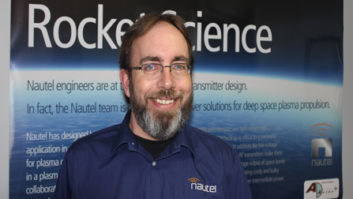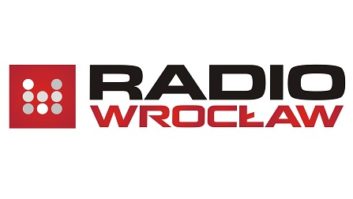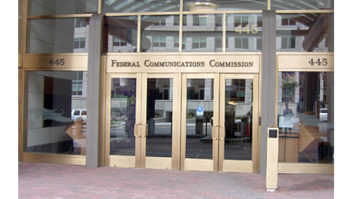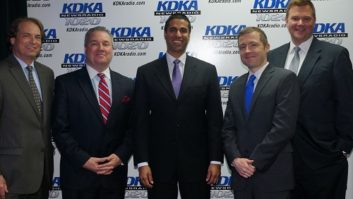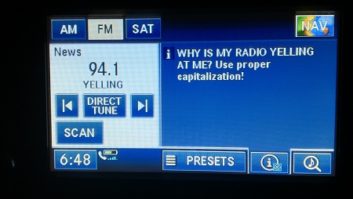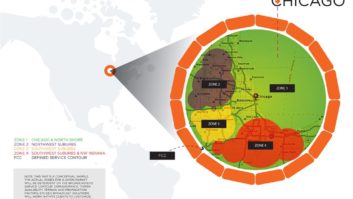The experiences of broadcast engineers managing AM HD Radio signals appear to vary greatly.
Radio World asked a number of chief engineers using the digital platform in various markets to comment. In addition to those quoted in the accompanying special report, five agreed to go on the record; their range of responses is indicative of the range of opinions about digital. Several others declined to comment, citing the sensitivity of the subject and company policy.
While some seem satisfied with AM HD’s performance, others said the lingering interference issues limit its appeal. Most agree that it is hard to gauge the success of AM HD due to the limited number of receivers in consumers’ hands.
“I consider (AM HD) a success. I think the improvement in sound quality is incredible,” said Brett Gilbert, director of engineering for the Clear Channel Tulsa cluster, which includes KTBZ(AM-HD) and KAKC(AM-HD).

Installation day for WTAW(AM-HD) in College Station, Texas, in 2008. GM Ben Downs is at left, with Chris Dusterhoff, chief engineer for Bryan Broadcasting Inc. “Unfortunately, I don’t know how many listeners we have that use HD radios.”
Clear Channel, an early adopter of AM HD Radio, has had no complaints regarding interference to other stations by the pair of stations in Tulsa, he said.
KAKC, which began HD broadcasts in 2006, is a directional AM operating on 1300 kHz with 5 kW day/1 kW night. It is digital during the day only to eliminate constant digital and analog blending in certain listening areas, Gilbert said. KTBZ is HD 24 hours a day. The station is a directional AM operating on 1430 kHz with 25 kW day/5 kW night.
Noncommercial WKAR(AM) in East Lansing, Mich., launched HD Radio in 2005 but turned off the digital carrier in 2009, according to Harold Beer, chief engineer for WKAR, which is licensed to Michigan State University.
“After years of encouraging listeners to get better quality wideband AM radios, we ended up degrading their listening experience with a 5 kHz bandwidth, –35 dB SNR analog signal once we turned on the IBOC digital,” Beer said.
“We also collected a number of negative comments due to the digital carrier, including complaints about the buzz that was always present, especially if a listener had an analog tuned radio that was slightly off-channel.” WKAR is a daytime directional AM operating on 870 kHz with 10 kW.
Michigan State University officials eventually placed a simulcast of WKAR’s programming on the HD2 channel of WKAR(FM). “There was simply no reason to continue to broadcast AM HD after that time,” Beer said.
Beer said AM HD works but wasn’t successful for his station. “In our worst reception areas, due to power line re-radiation and so forth, the digital would fail over to analog. The number of HD radios in our market is probably pretty small, so we were just really hurting ourselves with a noisy sounding analog signal.”
WKAR(AM), which operates on 870 kHz, also received complaints that it interfered with listeners’ ability to receive WLS(AM) at 890 kHz out of Chicago, Beer said.
‘Hard to classify’
Ron Schott, chief engineer for WJBC(AM) in Bloomington, Ill., said the station has received no interference complaints — “to others, or ourselves” — since the station began broadcasting in AM HD in 2007.
“The HD experience for WJBC is hard to classify without a large base of (HD) receivers in the market,” Schott said.
WJBC, licensed to Townsquare Media, is a non-directional AM operating 24 hours on 1230 kHz with 1 kW. The station serves central Illinois and is approximately 120 miles south of Chicago.
WPEN(AM-HD) in Philadelphia, which installed HD Radio in 2004, has had no interference complaints from other stations and only the occasional complaint about its own analog signal from listeners with wide-band AM radios found in the field, according to Larry Paulausky, chief engineer for Greater Media’s cluster in Philadelphia.
“The only negative has been during nighttime operation when trying to receive the station at the fringes of the HD coverage and the too-frequent blending back and forth between HD and analog audio when listening on an HD receiver. It can be annoying,” Paulausky said, “but the improved audio quality is a good thing.”
WPEN is a directional AM at 950 kHz with 25 kW day/21 kW night.
Paulausky envisions a “smart receiver” capable of noticing the number of blends occurring over a short time period and subsequently locking the audio to analog mode to alleviate such problems.
The HD channel of WTAW(AM-HD) in College Station, Texas, did cause some audible interference with the station’s analog signal when it was brought online in 2008, said Chris Dusterhoff, chief engineer for Bryan Broadcasting Inc.
“I really don’t notice it anymore, but I know it is still there. But we’ve had no reports of interference with other stations,” Dusterhoff said.
WTAW, which is a non-directional AM at 1620 kHz with 10 kW day/1 kW night, has had positive feedback from listeners who have purchased HD Radio receivers, Dusterhoff said.
What are your technical experiences with AM HD Radio? Write to[email protected]. Include your station’s frequency, authorized power and other details.





